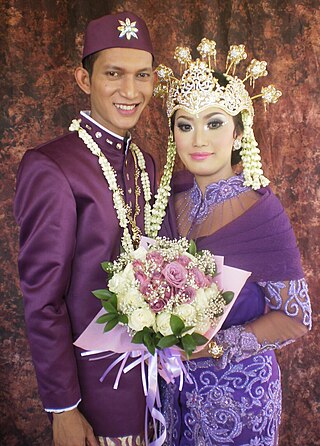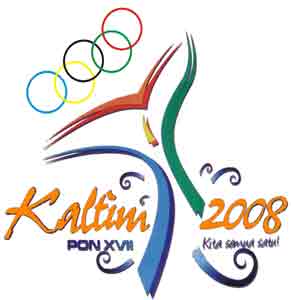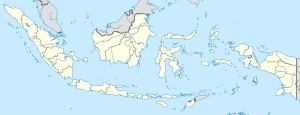
The culture of Indonesia has been shaped by long interaction between original indigenous customs and multiple foreign influences. Indonesia is centrally-located along ancient trading routes between the Far East, South Asia and the Middle East, resulting in many cultural practices being strongly influenced by a multitude of religions, including Buddhism, Christianity, Confucianism, Hinduism, and Islam, all strong in the major trading cities. The result is a complex cultural mixture, often different from the original indigenous cultures.

The Torajans are an ethnic group indigenous to a mountainous region of South Sulawesi, Indonesia. Their population is approximately 1,100,000, of whom 450,000 live in the regency of Tana Toraja. Most of the population is Christian, and others are Muslim or have local animist beliefs known as aluk. The Indonesian government has recognised this animistic belief as Aluk To Dolo.

The Sunda or Sundanese are an indigenous ethnic group native to the western region of Java island in Indonesia, primarily West Java. They number approximately 42 million and form Indonesia's second most populous ethnic group. They speak the Sundanese language, which is part of the Austronesian languages.

Dance in Indonesia reflects the country's diversity of ethnicities and cultures. There are more than 1,300 ethnic groups in Indonesia. Austronesian roots and Melanesian tribal forms are visible, and influences ranging from neighboring Asian and even western styles through colonization. Each ethnic group has its own dances: there are more than 3,000 original dance forms in Indonesia. The old traditions of dance and drama are being preserved in the many dance schools which flourish not only in the courts but also in the modern, government-run or supervised art academies.

West Sumba Regency is a regency in East Nusa Tenggara Province of Indonesia. Established in 1958, the regency was considerably reduced in 2007 with the creation of new Regencies on Sumba Island. Its area is now 737.42 km2, and its population was 111,993 at the 2010 census and 145,097 at the 2020 Census. It has its seat (capital) in (Kota) Waikabubak.

Waikabubak is a town in East Nusa Tenggara province of Indonesia and it is the capital of West Sumba Regency. Waikabubak is the second largest town on Sumba island after Waingapu; it had a population of 33,064 at the 2020 Census.

Tarung Derajat is a full body contact hybrid martial art from Indonesia, created by Haji Achmad Dradjat. He developed the techniques through his experience as a street fighter during the 1960s in Bandung. Tarung Derajat is officially recognized as a national sport and used as a basic martial art training for the Indonesian Armed Forces and Indonesian National Police.

2008 Pekan Olahraga National or the Indonesia National Games XVII were a major multi-sport event in Indonesia which took place in Samarinda, East Kalimantan, from 5–17 July 2008. A total of 7,946 athletes participated in the biggest-ever Pekan Olahraga Nasional and also the first on the island of Borneo. These games make Samarinda the second city to host Pekan Olahraga Nasional outside of the island of Java and Sumatra, after Makassar hosted the 1957 Pekan Olahraga Nasional.
Tarung Derajat is a demonstration sport at the 26th Asian Games in Palembang, Indonesia.

Tabuan Island is an island of southern Sumatra, under the jurisdiction of Lampung province. It is administered as part of the Cukuh Balak district of Tanggamus Regency.

2004 Pekan Olahraga Nasional or the Pekan Olahraga Nasional XVI were a major multi-sport event in Indonesia which took place in South Sumatra, from 2 September to 14 September 2004. A total of 607 events in 41 sports were competed among more than 5,500 athletes from 30 provinces, with the newly created province of Riau Islands only as observer and did not send any athletes. The games also staged 8 paralympic sports.
Okky Ayudhia Lukman or better known as Okky Lukman is an Indonesian actress, comedian and presenter of Minangkabau descent.
Wendy Armoko, also known as Wendy Cagur, is an Indonesian rapper, actor, presenter, and comedian. He is a member of band The Cagur Band, which was formed by members of the comedy group Cagur.

Indonesian martial arts includes a variety of fighting systems native to or developed in the archipelago of Indonesia, both the age-old traditional arts, and the more recently developed hybrid combatives. In the Indonesian language the term bela-diri is used to mean martial art, and in essence the Indonesian fighting arts are meant as one's defence against perceived threat and assault. Other than physical training, they often include spiritual aspects to cultivate inner strength, inner peace and higher psychological ends.
SMA Negeri (SMAN) 2 Medan is a public high school in North Sumatra, Indonesia. The school covers Grades 10-12). It is located in the Medan City Region. The school achieved the title of a Specimen School for computer-based learning in 2009–2010.
Tuanku Rao (1790-1833) was an Islamic cleric (ulama), leader and commander. He was known as a prominent padri, a group of Islamic reformists who advocated for the puritanical approach in Islam inspired by Muhammad ibn Abd al-Wahhab in the early 18th century West Sumatra. He also contributed to the proselytization of Islam among Batak people. He died during the Padri War in 1833.
Misbach Tamrin is an Indonesian artist.
Amrus Natalsya - an Indonesian painter and wood sculpture artist.
Loli, historically also known as Lauli, is a district (kecamatan) in West Sumba Regency, East Nusa Tenggara province, Indonesia. The district consists of nine villages and five urban villages (kelurahan) and has its seat in Doka Kaka village. The district has a total area of 122.49 square kilometres (47.29 sq mi) and has a population of 38,932 as of 2020. The most populous village in the district is Soba Wawi, which has a population of 6,902 people, while the most densely populated village is Wee Karou with density of 731.67 people per square kilometer. The district is the site of Gollu Potto, a statue of Jesus which is one of the main landmarks of the regency itself and the largest in the island of Sumba.















